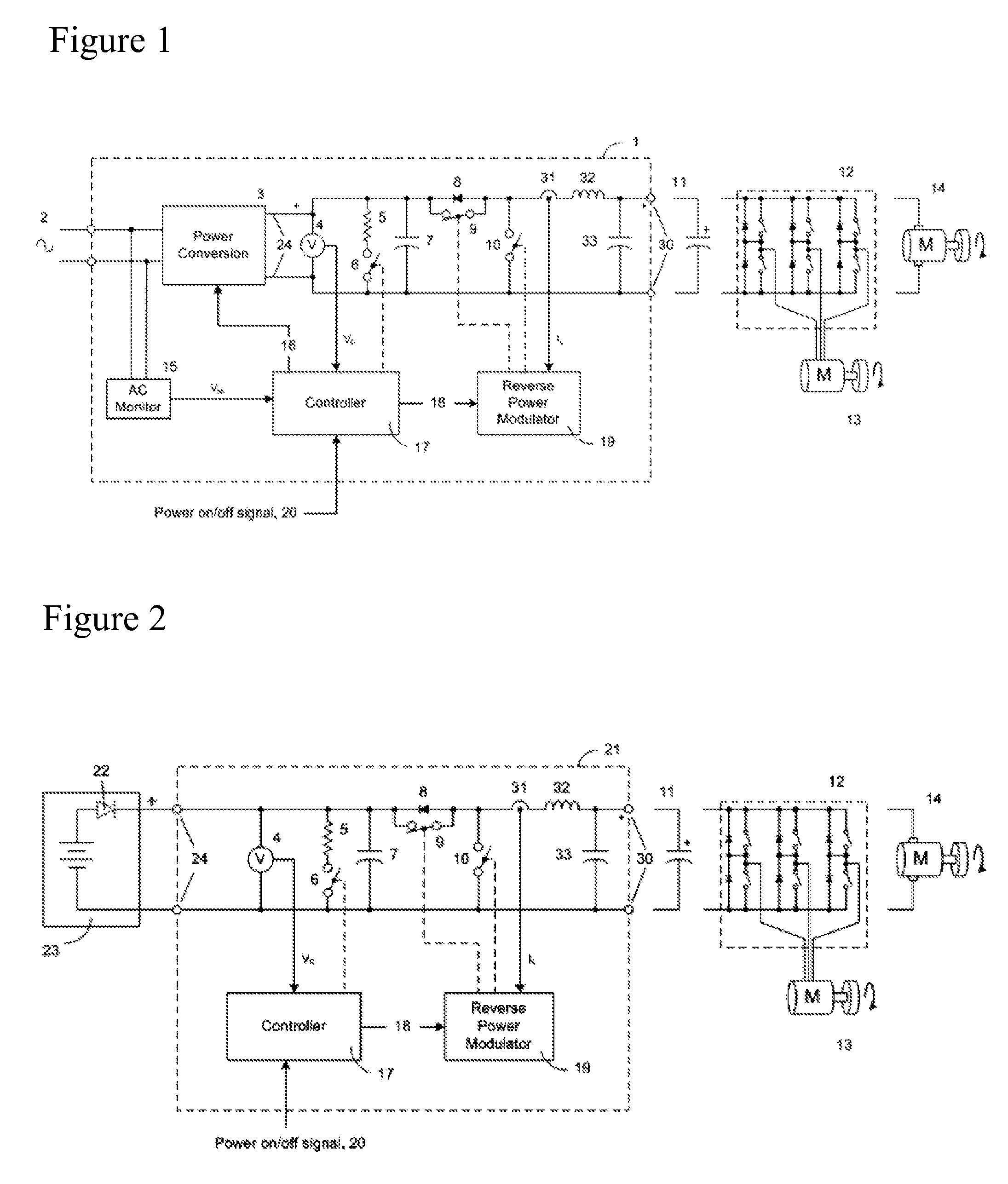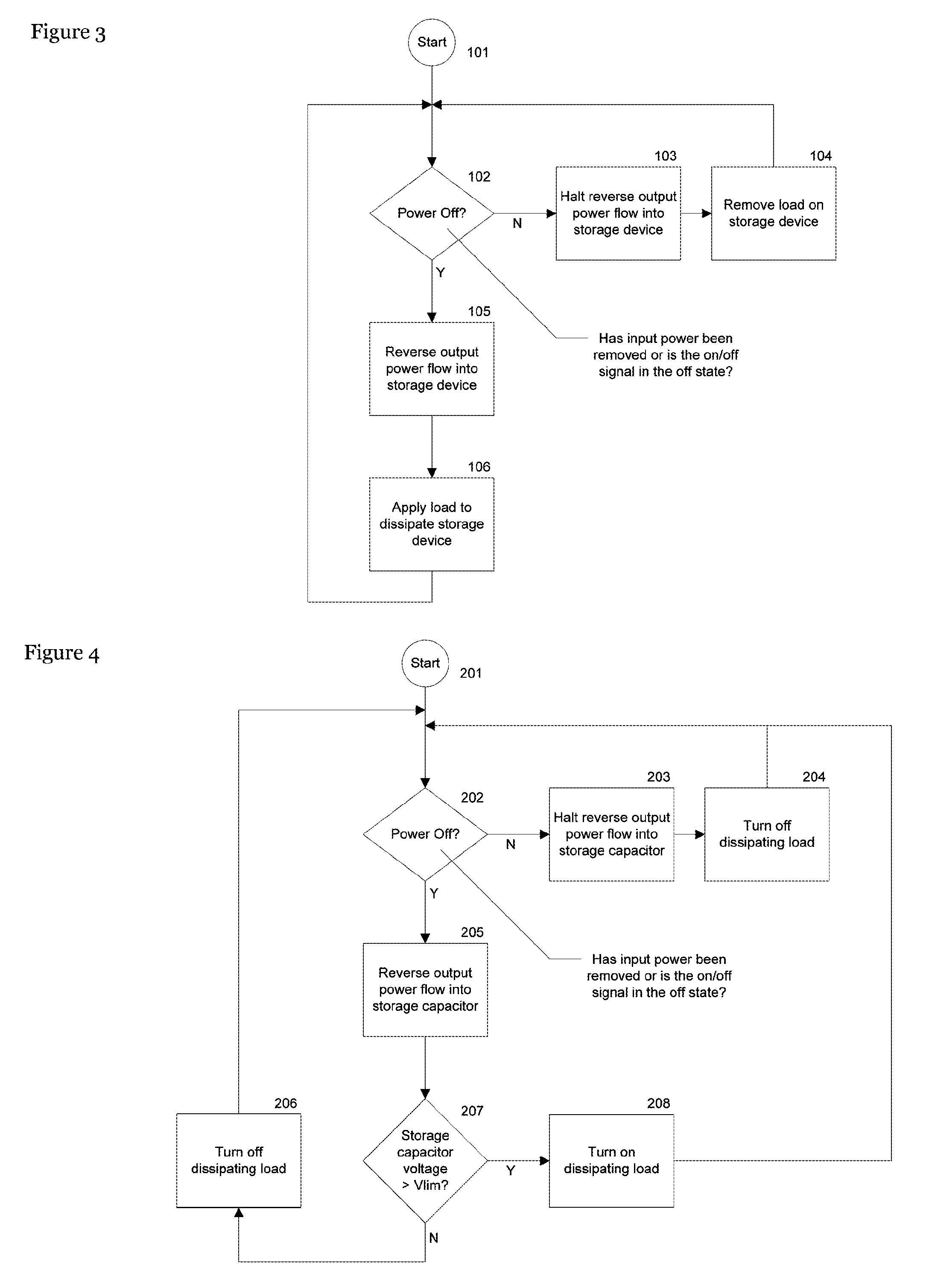Method and apparatus to remove energy from DC loads
a technology of dc load and energy removal, applied in the direction of electrical equipment, power conversion systems, instruments, etc., can solve the problems of increasing the energy loss of the system, requiring additional expense and complexity on the part of the user, and storing energy within the load(s) to dissipate passively,
- Summary
- Abstract
- Description
- Claims
- Application Information
AI Technical Summary
Benefits of technology
Problems solved by technology
Method used
Image
Examples
first example
AC-DC Converter
[0022]FIG. 1 illustrates an AC-DC converter embodying the invention (1) which applies all three methods of load energy removal for purposes of example. It will be understood by one skilled in the art that the invention need not necessarily include all three methods, but may incorporate one, two or all of the methods as desired.
[0023]AC power (2) is applied to power converter stage (3), which converts the AC power to DC at DC supply points (24). The AC power input (2) may be monitored by an AC monitor (15), which measures the voltage (2) and supplies a signal VAC representing the status of the AC input (2) to an input of controller (17).
[0024]The power converter (3) has a control input (16) coupled to an output of controller (17), which allows the controller (17) to switch the converter (3) on or off. This converter (3) could be any power supply known to the art, ranging from a simple rectifier to a regulated DC power supply or a switching power supply.
[0025]The DC out...
second example
DC Power Switch
[0032]FIG. 2 illustrates a simpler embodiment of the invention which is useful where a source of DC exists at the correct voltage and with sufficient current capability to power a DC load without having to convert it from AC.
[0033]In this example, the power converter (3) and AC monitor (15) of FIG. 1 are omitted, and the circuit of the invention (21) is directly supplied by DC (24) from an external DC supply (23). This DC supply could be, for example, a battery (as shown schematically in the figure), a rectifier, an external regulated power supply or switching supply fed from the AC line, a generator, or any other DC power source known to the art.
[0034]If the DC supply (23) is of a kind which cannot accept reverse current, a blocking diode (22) may optionally be provided.
[0035]The other elements of the circuit (21) are the same as described the circuit (1) of the first example, above, and will not be separately described herein. Elements in FIG. 2 which are the same a...
PUM
 Login to View More
Login to View More Abstract
Description
Claims
Application Information
 Login to View More
Login to View More - R&D
- Intellectual Property
- Life Sciences
- Materials
- Tech Scout
- Unparalleled Data Quality
- Higher Quality Content
- 60% Fewer Hallucinations
Browse by: Latest US Patents, China's latest patents, Technical Efficacy Thesaurus, Application Domain, Technology Topic, Popular Technical Reports.
© 2025 PatSnap. All rights reserved.Legal|Privacy policy|Modern Slavery Act Transparency Statement|Sitemap|About US| Contact US: help@patsnap.com



